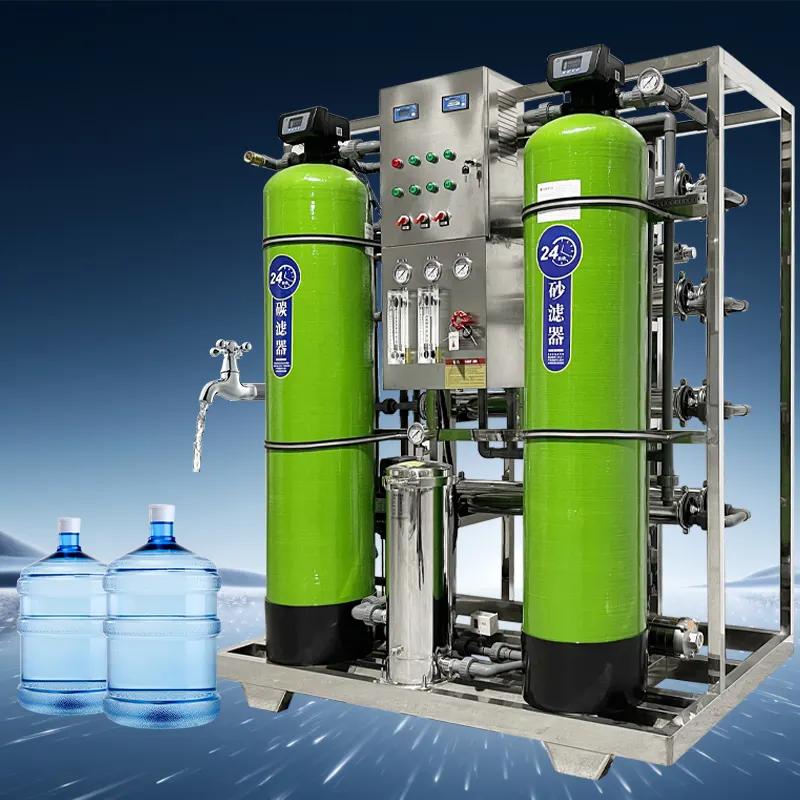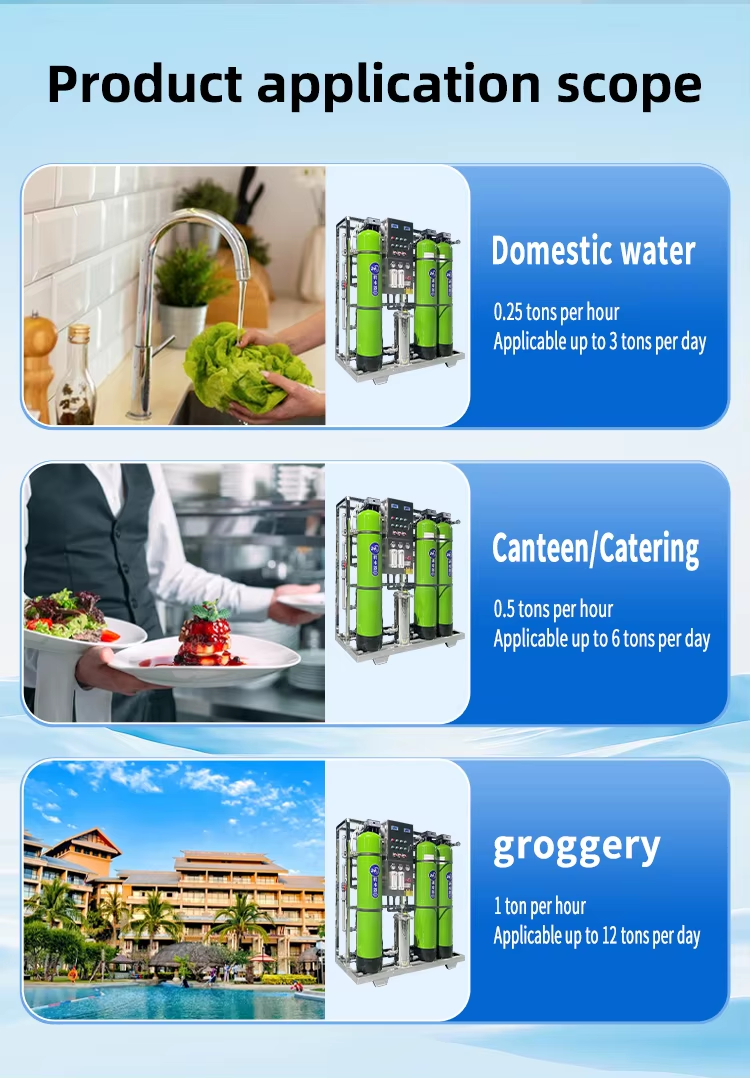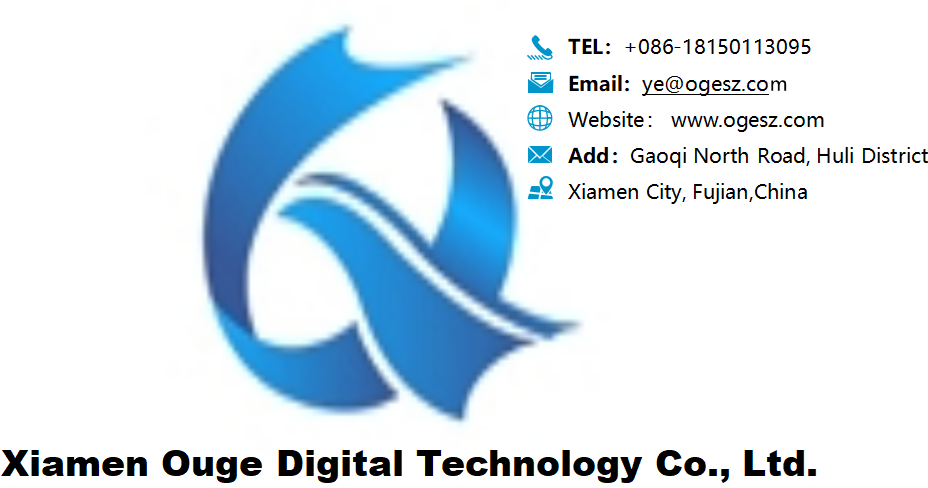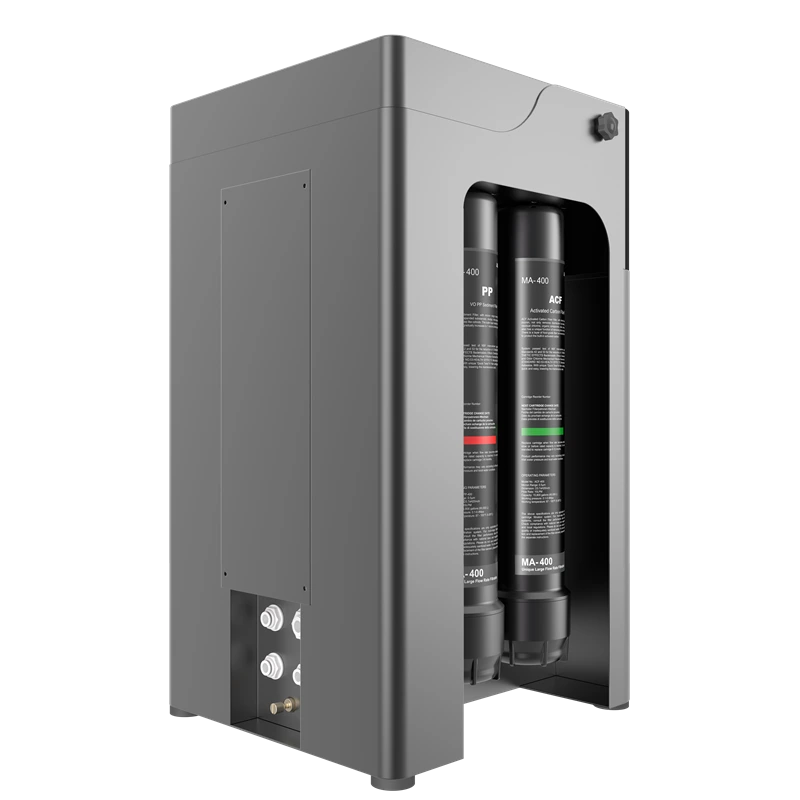With water quality issues gaining increasing attention, reverse osmosis equipment has become a popular choice for household and industrial water purification, thanks to its reputation for ‘high-efficiency purification’. From compact domestic water purifiers on kitchen counters to large-scale industrial water treatment systems in factories, any system touting ‘deep impurity removal’ almost invariably relies on reverse osmosis technology.

Yet many are aware only that it filters out impurities and heavy metals, without grasping the underlying principles. When selecting equipment, terms like ‘flux’ and ‘salt rejection rate’ often leave them bewildered. In truth, the “magic” of reverse osmosis purification hinges entirely on the seamless coordination of its core internal components. Today, we'll dissect its ‘core architecture’ – master these fundamentals, and you'll never make a misstep when choosing equipment again!
I. Understanding Reverse Osmosis: The Purification Logic of Making Water “Run Backwards”
To grasp the equipment's function, one must first comprehend the core principle of reverse osmosis. Imagine it as a “water breakthrough operation”: in its natural state, water flows from the side with higher purity (such as fresh water) through a semi-permeable membrane towards the side with more impurities (such as salt water). This is called “osmosis”. Reverse osmosis technology employs high-pressure pumps to force water to ‘reverse course’—compelling impurity-laden source water to pass through a specialised reverse osmosis membrane under pressure. Impurities are firmly trapped on one side of the membrane, while the other side yields highly purified water.
Simply put, the reverse osmosis membrane functions like a ‘super filter,’ capable of retaining 95%-99% of dissolved salts, heavy metals (lead, mercury, arsenic, etc.), bacteria, viruses, and even small-molecule organic compounds like pesticide residues. However, for this “filter” to operate efficiently, it relies on the ‘support’ of other components.
II. Deconstructing the Five Core Components of Reverse Osmosis Equipment: Not One Can Be Omitted
A reliably functioning reverse osmosis system operates like a precision ‘water purification task force,’ where each component has a distinct role and none can be dispensed with. Whether in domestic water purifiers or industrial-grade systems, the core structure invariably comprises these five elements:

1. Pre-treatment System: The ‘Protective Shield’ for Reverse Osmosis Membranes
Though robust, reverse osmosis membranes are also quite ‘delicate’. Impurities in water—such as silt, rust, colloids, and residual chlorine—can act like “pebbles” that abrade the membrane surface or like ‘glue’ that adheres to it, leading to membrane clogging and reduced lifespan. The pre-treatment system's role is to ‘clear the path’ before raw water enters the membrane assembly.
Common pre-treatment components include:
PP cotton filter cartridge: Filters large impurities like silt, rust, and suspended particles, acting as a ‘primary sieve’;
Activated carbon cartridges: Adsorb residual chlorine, odours, and discolouration (such as the disinfectant taste in tap water), while removing some organic compounds to protect membranes from chlorine oxidation;
Softening resin (optional): For areas with hard water (high scale formation), removes calcium and magnesium ions to reduce membrane fouling, particularly suitable for northern households or industrial equipment.
The quality of the pre-treatment system directly determines the lifespan of the reverse osmosis membrane. For instance, if the PP cotton filter cartridge is not replaced regularly, silt and sand will directly enter the membrane assembly, potentially rendering a membrane designed to last 3-5 years unusable within a single year.
2. High-Pressure Pump: The ‘Power Engine’ of Water Purification
As previously noted, the core principle of reverse osmosis is ‘forcing water to flow in reverse’. Achieving this necessitates overcoming the osmotic pressure of the source water – a task requiring the ‘power’ supplied by a high-pressure pump. The pressure output of the high-pressure pump directly impacts the system's water production efficiency and purification effectiveness: insufficient pressure prevents water from passing through the reverse osmosis membrane smoothly, significantly reducing output; excessively high pressure risks damaging the membrane assembly and increasing energy consumption. Equipment for different applications demands varying specifications from high-pressure pumps: domestic water purifiers utilise pumps with relatively low power ratings (typically tens of watts), sufficient for daily drinking water needs; industrial installations (such as electronics factories or pharmaceutical plants), requiring substantial water output, may employ pumps with power ratings reaching several kilowatts or higher.
3. Reverse Osmosis Membrane Modules: The “Core Battlefield” of Water Purification
If the pre-treatment system is the “protective shield” and the high-pressure pump the “power engine”, then the reverse osmosis membrane module is the “heart” of the entire apparatus, where all core purification actions are accomplished.
Membrane Material and Structure: The predominant reverse osmosis membranes today are polyamide composite membranes, featuring a pore size of merely 0.0001 micrometres (equivalent to one hundred-thousandth the diameter of a human hair). This extreme precision effectively blocks nearly all harmful impurities while allowing water molecules to pass freely.
Membrane Module Form: In domestic systems, membrane modules are predominantly ‘spiral-wound’ (resembling rolled-up scrolls), offering compact size and high efficiency. Industrial installations may employ “tubular” or ‘hollow fibre’ configurations to accommodate high-flow purification demands. When selecting equipment, membrane brand and performance are paramount. Premium reverse osmosis membranes (such as Dow or Toray brands) deliver stable salt rejection rates and robust anti-fouling capabilities, whereas inferior membranes may experience ‘purification failure’ within months, leading to degraded output water quality.
4. Intelligent Control System: The Equipment's ‘Central Nervous System’
Modern reverse osmosis systems have long moved beyond the crude ‘full throttle upon start-up’ mode. The integration of intelligent control systems enhances energy efficiency and user convenience. This system typically comprises sensors, solenoid valves, and display screens, primarily responsible for:
Monitoring operational status: Real-time surveillance of feed pressure, product water quality (e.g., conductivity), and water temperature. Automatic alerts trigger upon anomalies (such as excessive pressure due to membrane fouling).
Automatic start/stop and flushing: During shutdown, the system automatically flushes the membrane surface with purified water to prevent residue buildup. Some domestic units also support ‘on-demand water production’ to avoid secondary contamination from prolonged storage.
Maintenance alerts: Notifies users via display or mobile app to replace filters or clean membrane modules, eliminating reliance on subjective timing for maintenance.
For ordinary users, the system's user-friendliness is paramount: features like clear indicator lights and visual filter life displays significantly lower the learning curve.

5. Post-treatment and storage systems: Enabling ‘on-demand drinking water’
Water filtered through reverse osmosis membranes is already highly purified. However, to meet diverse application requirements, post-treatment and storage systems provide the finishing touches:
Post-treatment systems: Domestic purifiers often incorporate ‘post-activated carbon cartridges’ to further enhance taste, yielding sweeter-tasting water. Industrial applications (e.g., pharmaceuticals, electronics) may incorporate ‘UV sterilisation’ or ‘EDI electrodialysis deionisation’ to achieve higher water quality standards;
Storage System: This comprises pressurised storage tanks designed to hold purified water. Given the relatively slow production rate of reverse osmosis systems (typically tens of millilitres per minute for domestic units), storage tanks enable immediate access to purified water upon turning on the tap, eliminating lengthy waiting times. Note that storage tanks require regular cleaning to prevent bacterial growth on inner surfaces. For those prioritising ‘fresh, direct drinking water,’ tankless reverse osmosis systems are an option. These utilise booster pumps to accelerate water production, minimising contamination risks associated with storage.
III. When selecting reverse osmosis equipment, focus on these three ‘component details’
Once you understand the core components, you won't be swayed by sales pitches when choosing equipment. Concentrate on these three points:
1. Whether Pre-Treatment is ‘Adequate’
If local water is hard (prone to limescale), always select equipment with ‘softening resin’; if tap water has a strong residual chlorine odour, prioritise products with high-grade activated carbon filters (e.g., coconut shell activated carbon). More comprehensive pre-treatment extends membrane lifespan and reduces long-term maintenance costs.
2. Membrane ‘Desalination Efficiency’ and ‘Flux’ Desalination Efficiency: Indicates the ability to remove salts (including heavy metals and inorganic salts) from water. High-quality systems should achieve ≥95% efficiency with minimal long-term decline. Flux: Denotes water production per unit time. For domestic use, selecting 400G (gallons) or above suffices for a 3-5 person household. Industrial applications should calculate based on actual water consumption to avoid ‘overkill’.
3. Whether the Control System is ‘Practical’
Ordinary users should prioritise equipment with ‘filter life alerts’ and ‘automatic flushing’ functions, with simpler operation being preferable. Corporate users should consider whether the system supports ‘remote monitoring’ and ‘data networking’ for convenient batch management of multiple units.
Conclusion
The ‘water purification capability’ of reverse osmosis equipment is never the result of any single component operating in isolation. Rather, it stems from the coordinated operation of pre-treatment, high-pressure pumps, membrane modules, control systems, and water storage systems. When selecting equipment, rather than fixating on brand prestige, scrutinise the core component configuration – after all, robust components ensure stable purification performance and long-term reliability.
Next time someone recommends a reverse osmosis system, ask: ‘How many stages of pre-treatment? What brand of membrane is used?’ Knowledgeable questions help avoid 90% of pitfalls!

 Reverse Osmosis Scaling Right After Startup? Here's What You Need to Know About Prevention and Treatment!
Reverse Osmosis Scaling Right After Startup? Here's What You Need to Know About Prevention and Treatment!
 Reverse Osmosis Scaling Right After Startup? Here's What You Need to Know About Prevention and Treatment!
Reverse Osmosis Scaling Right After Startup? Here's What You Need to Know About Prevention and Treatment!
 Three Certain Trends in Commercial Water Purification Over the Next Five Years
Three Certain Trends in Commercial Water Purification Over the Next Five Years
 Eight Different Methods for Pure Water Treatment Equipment Processes
Eight Different Methods for Pure Water Treatment Equipment Processes